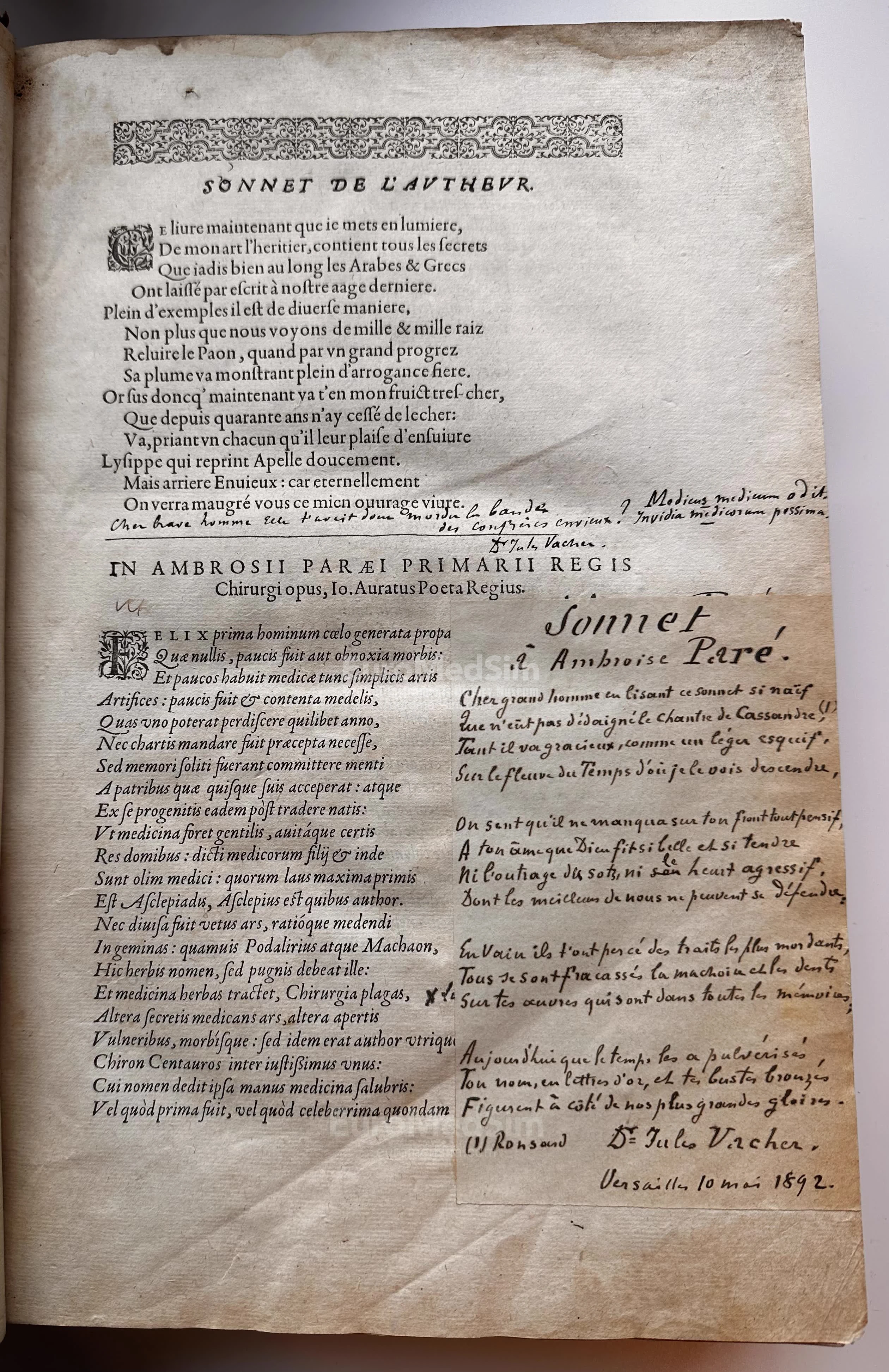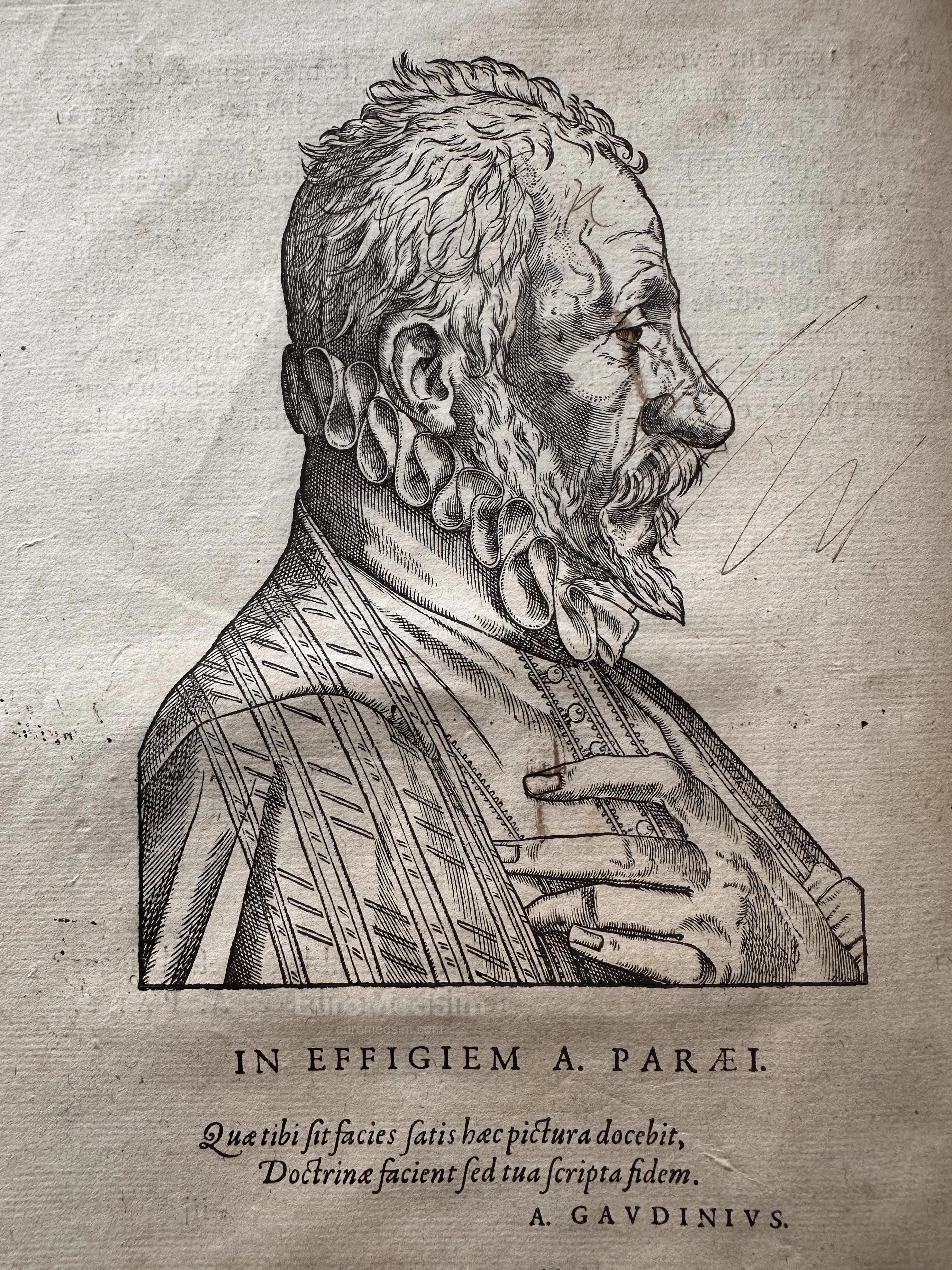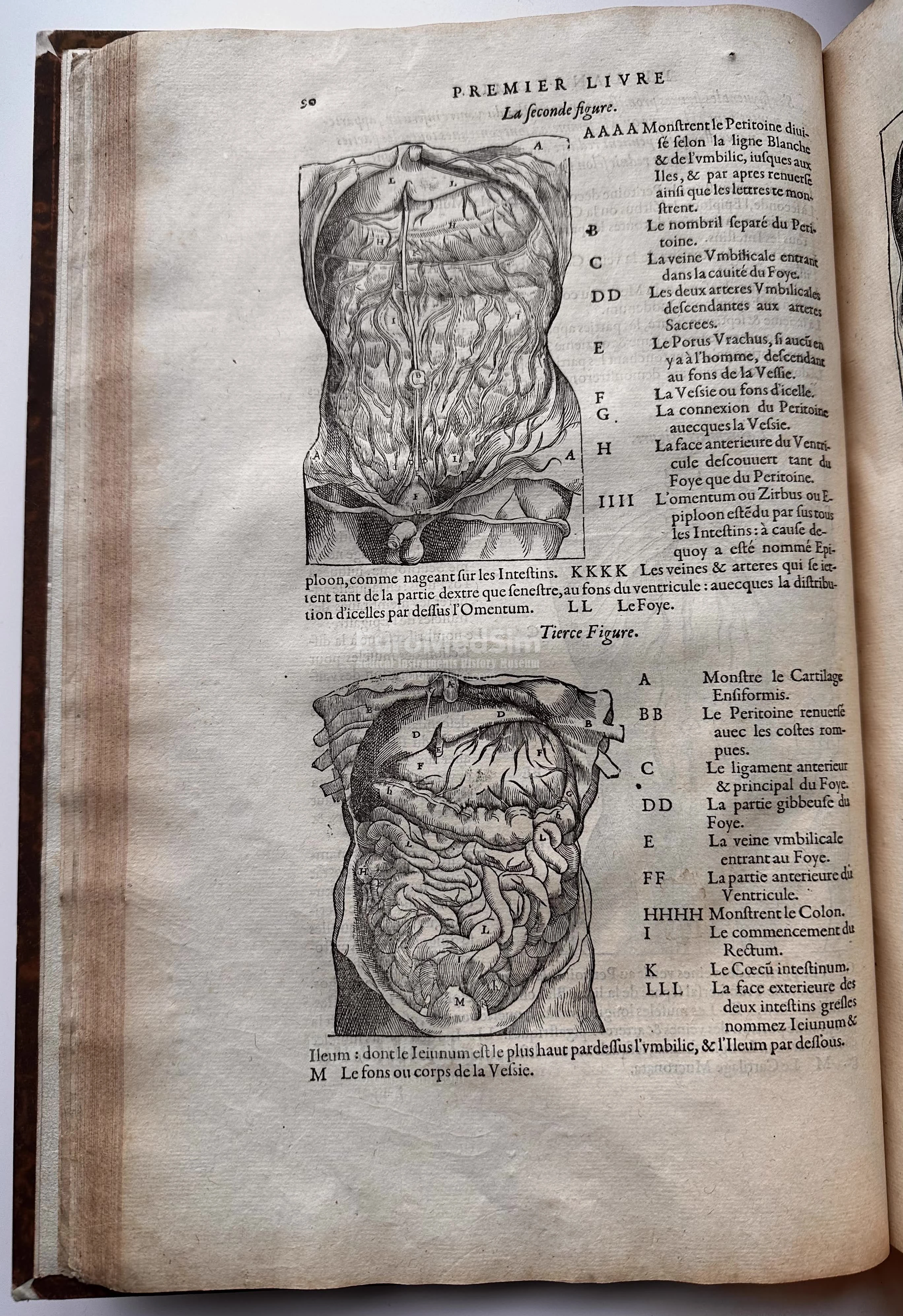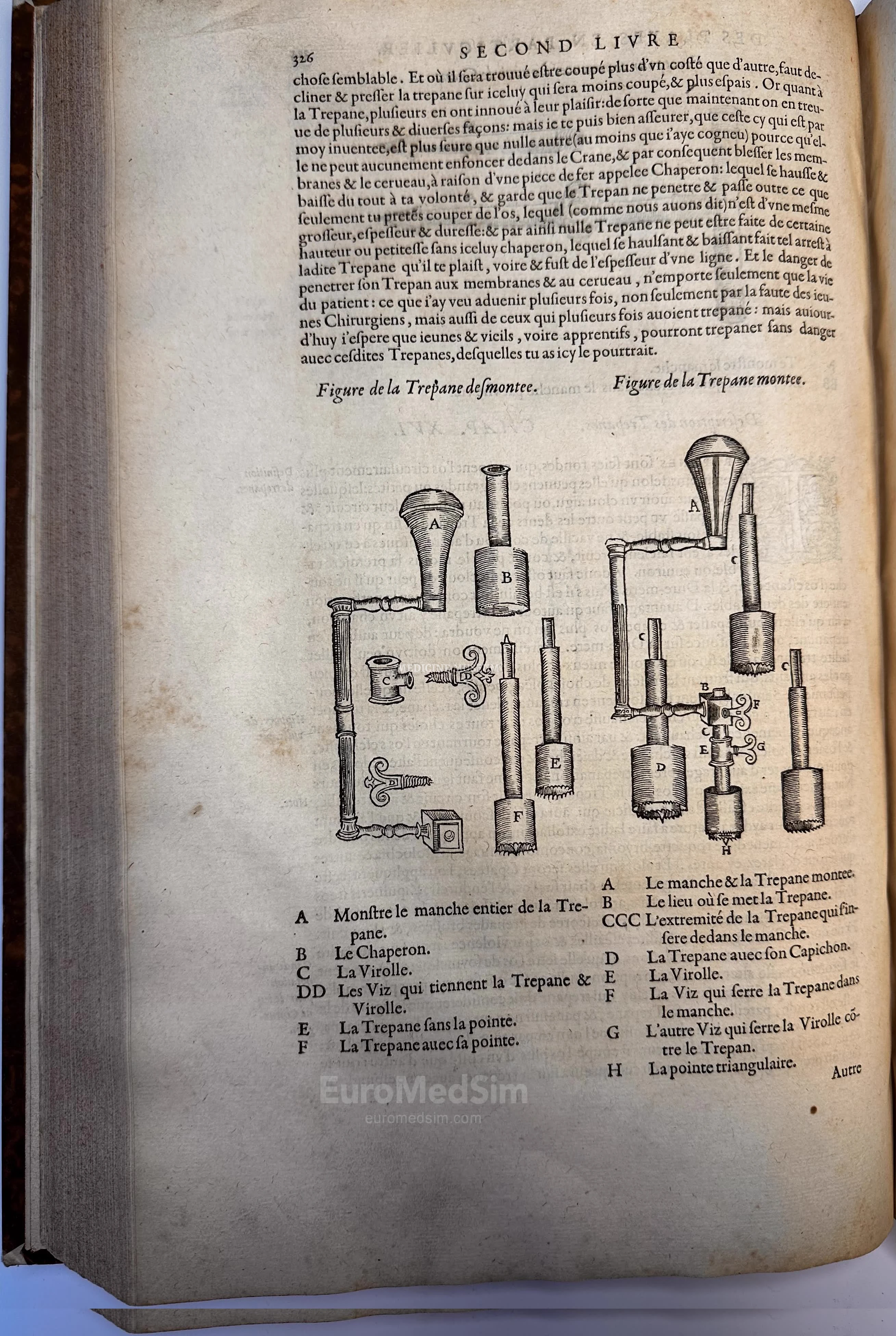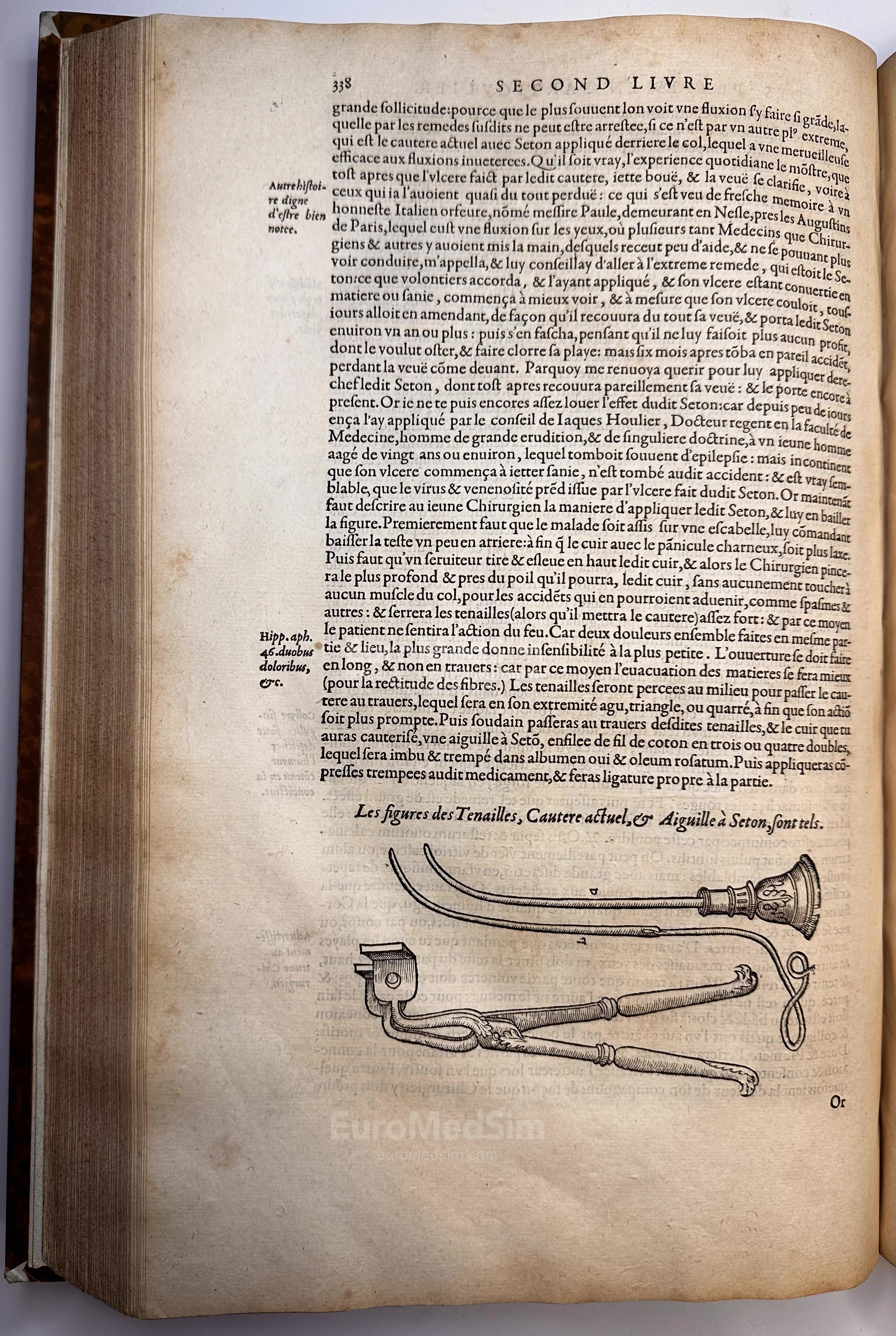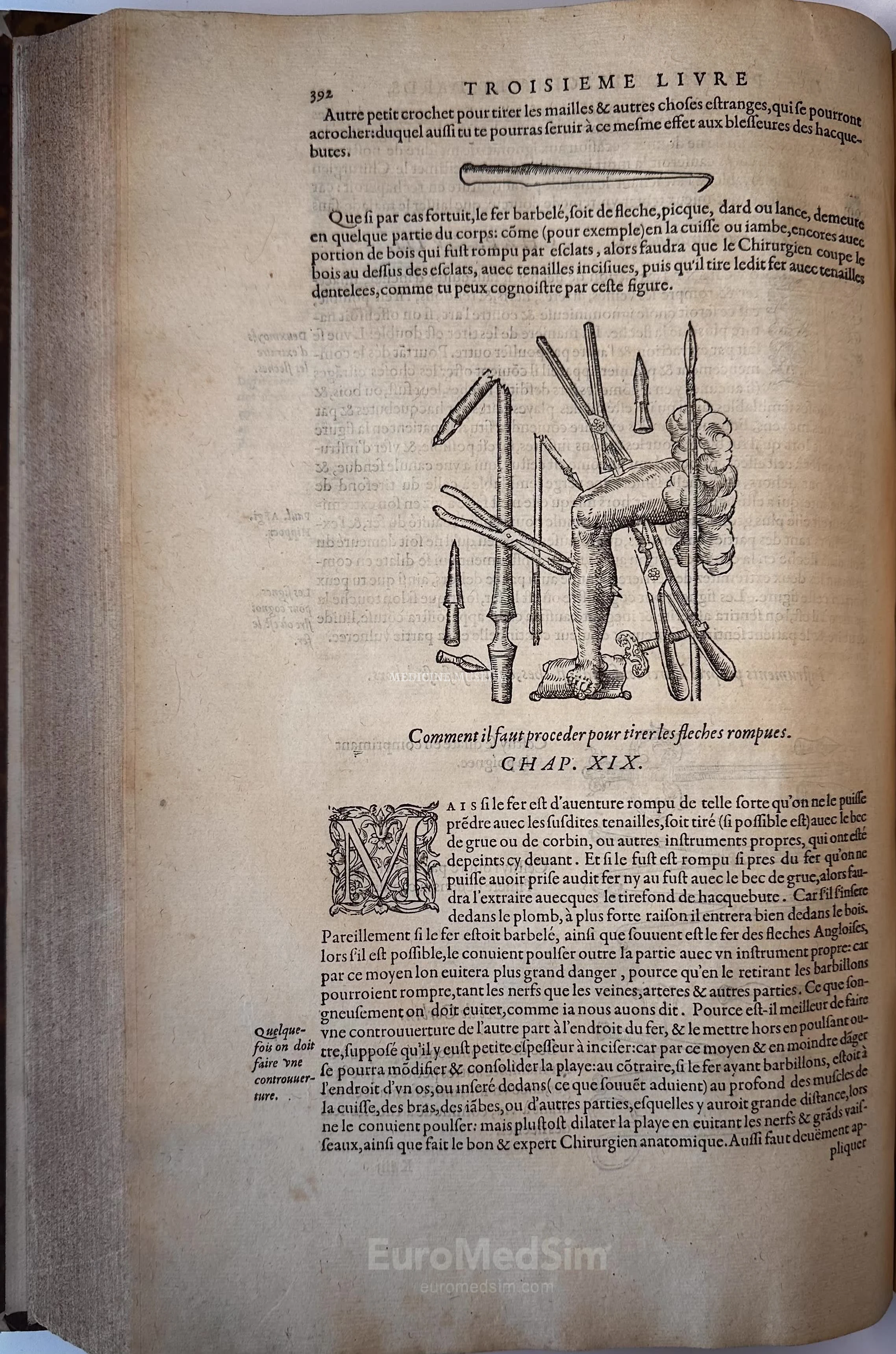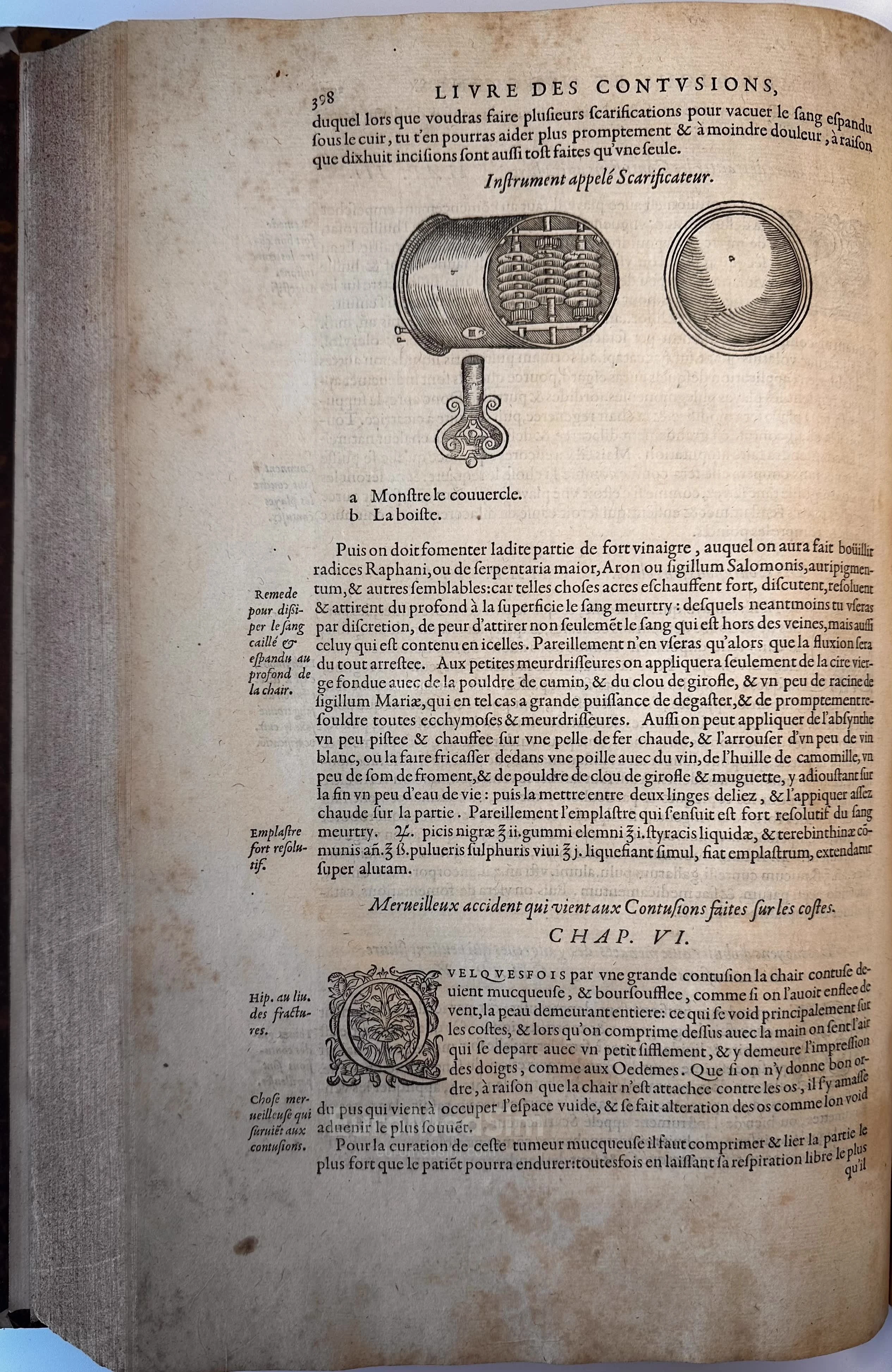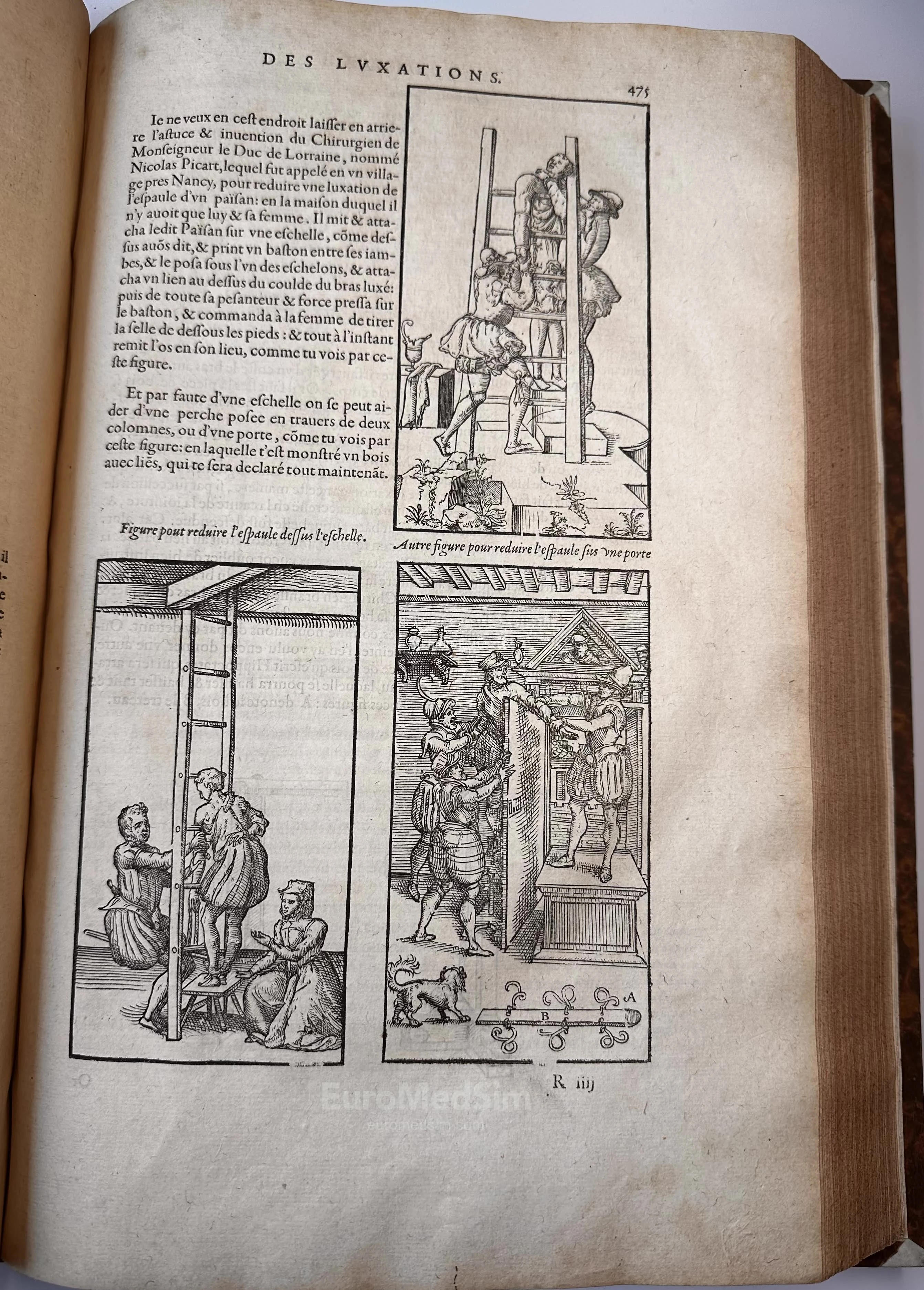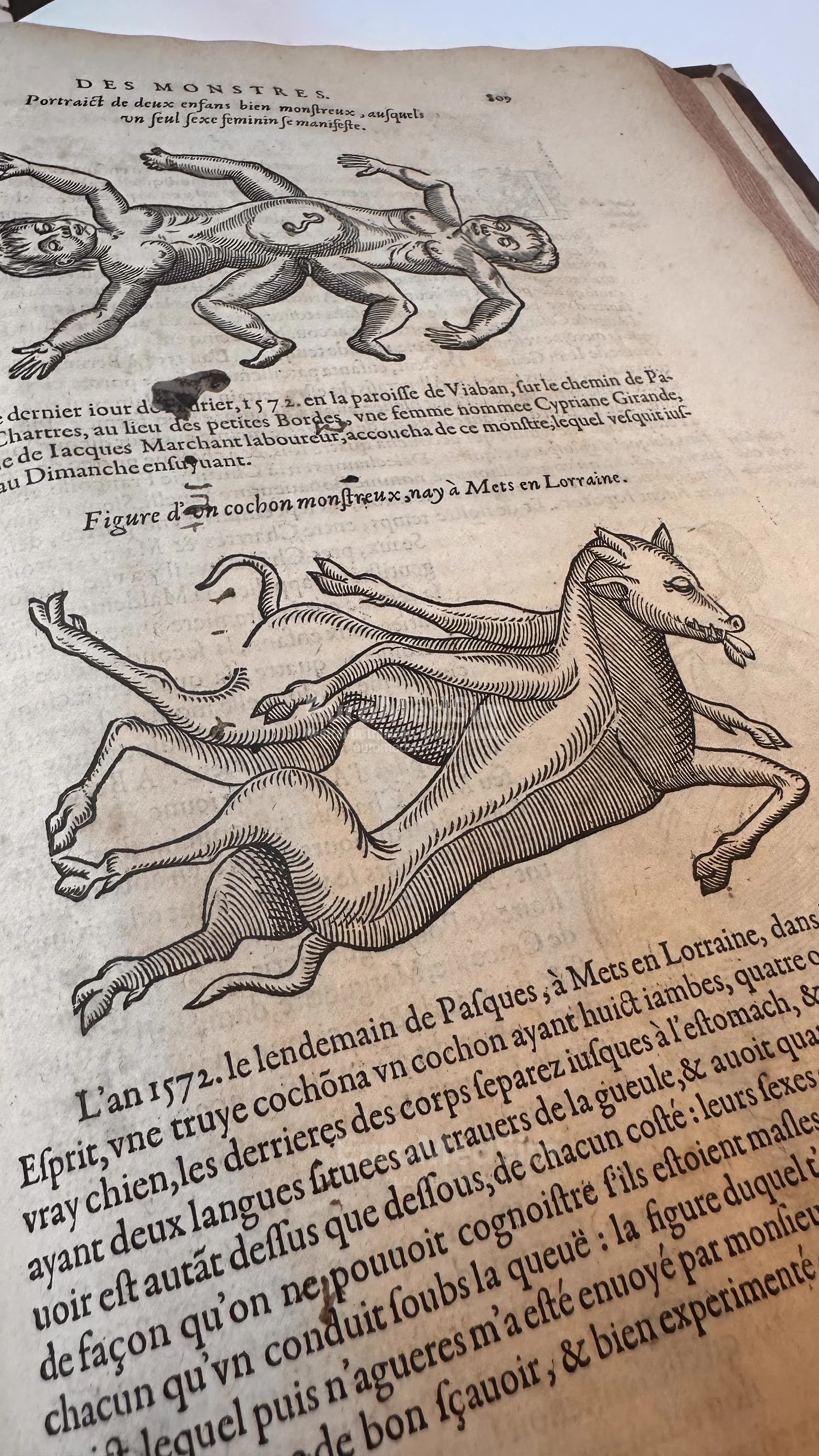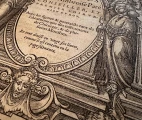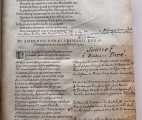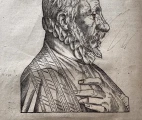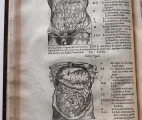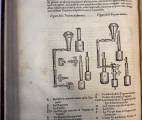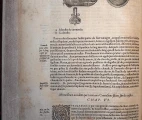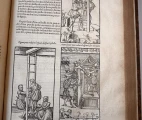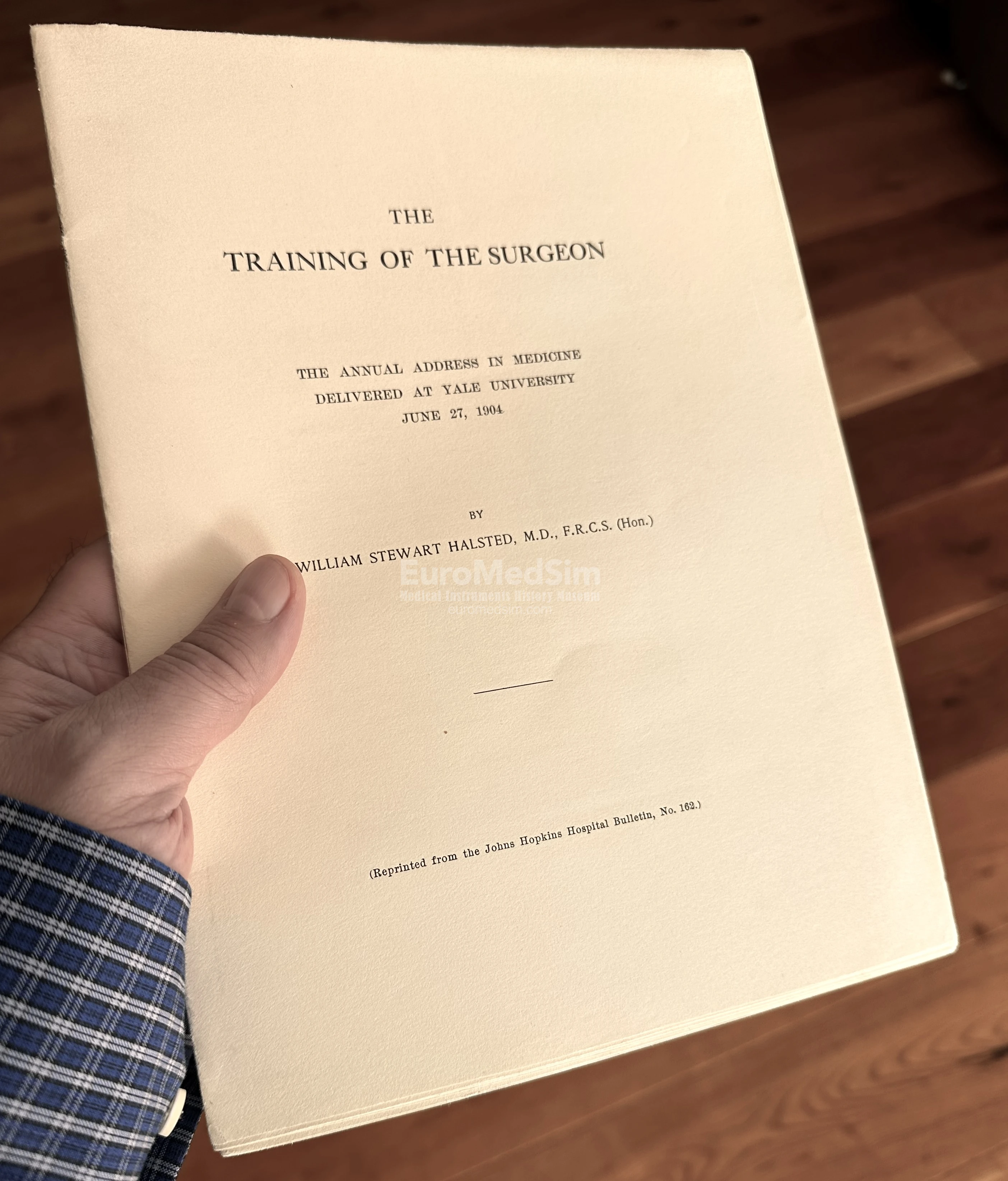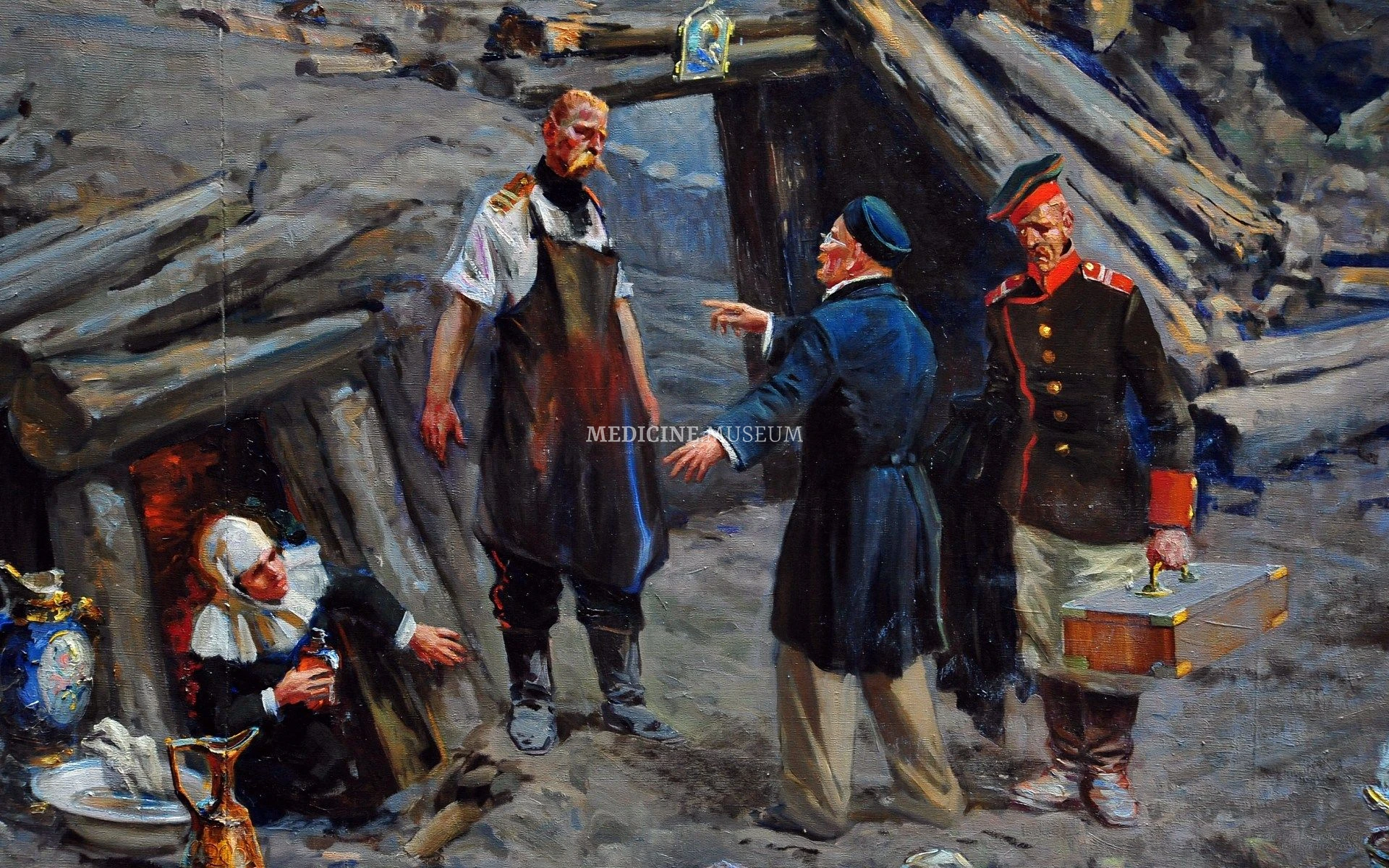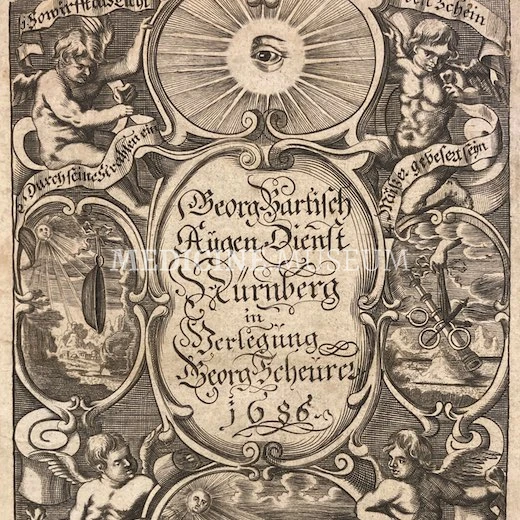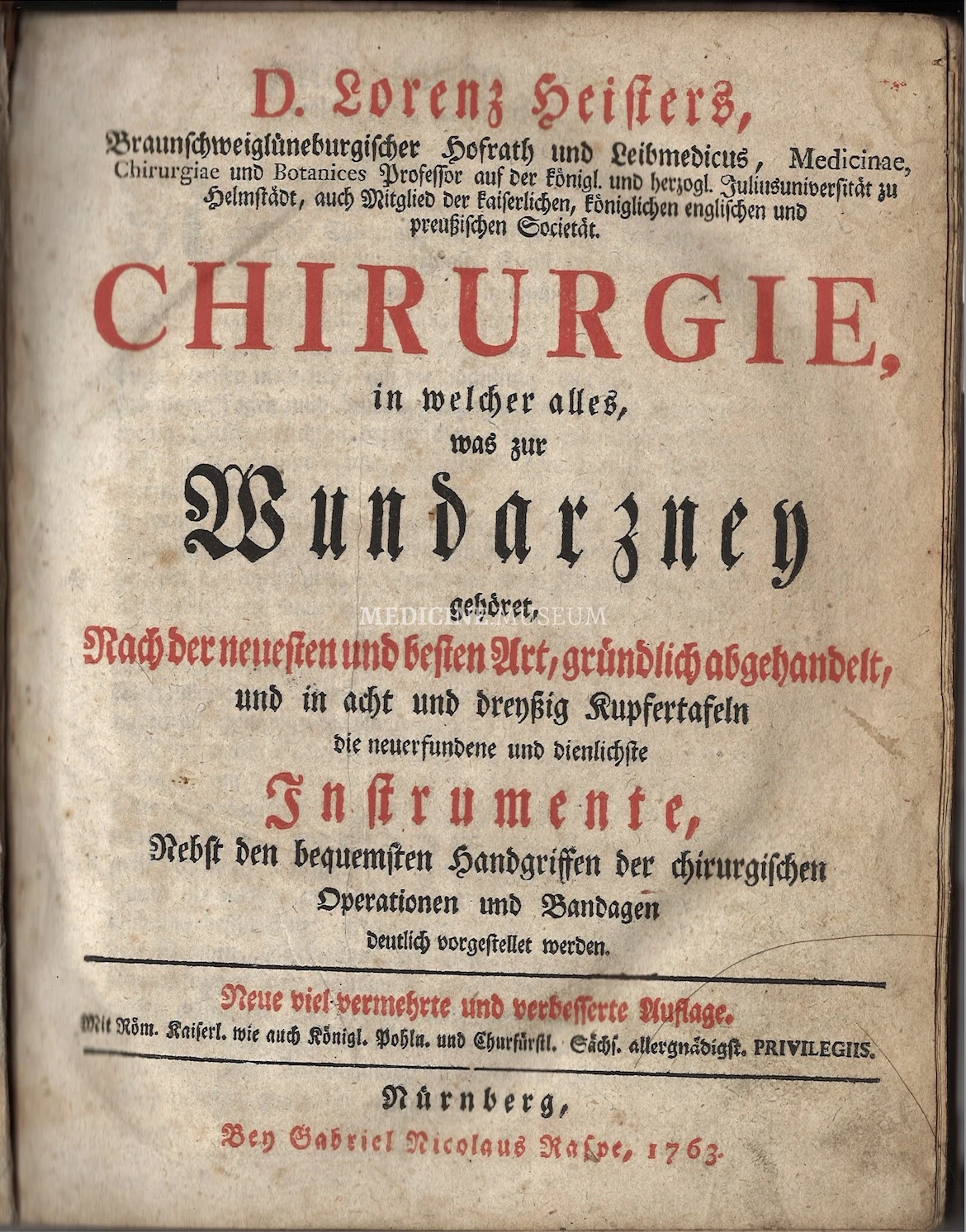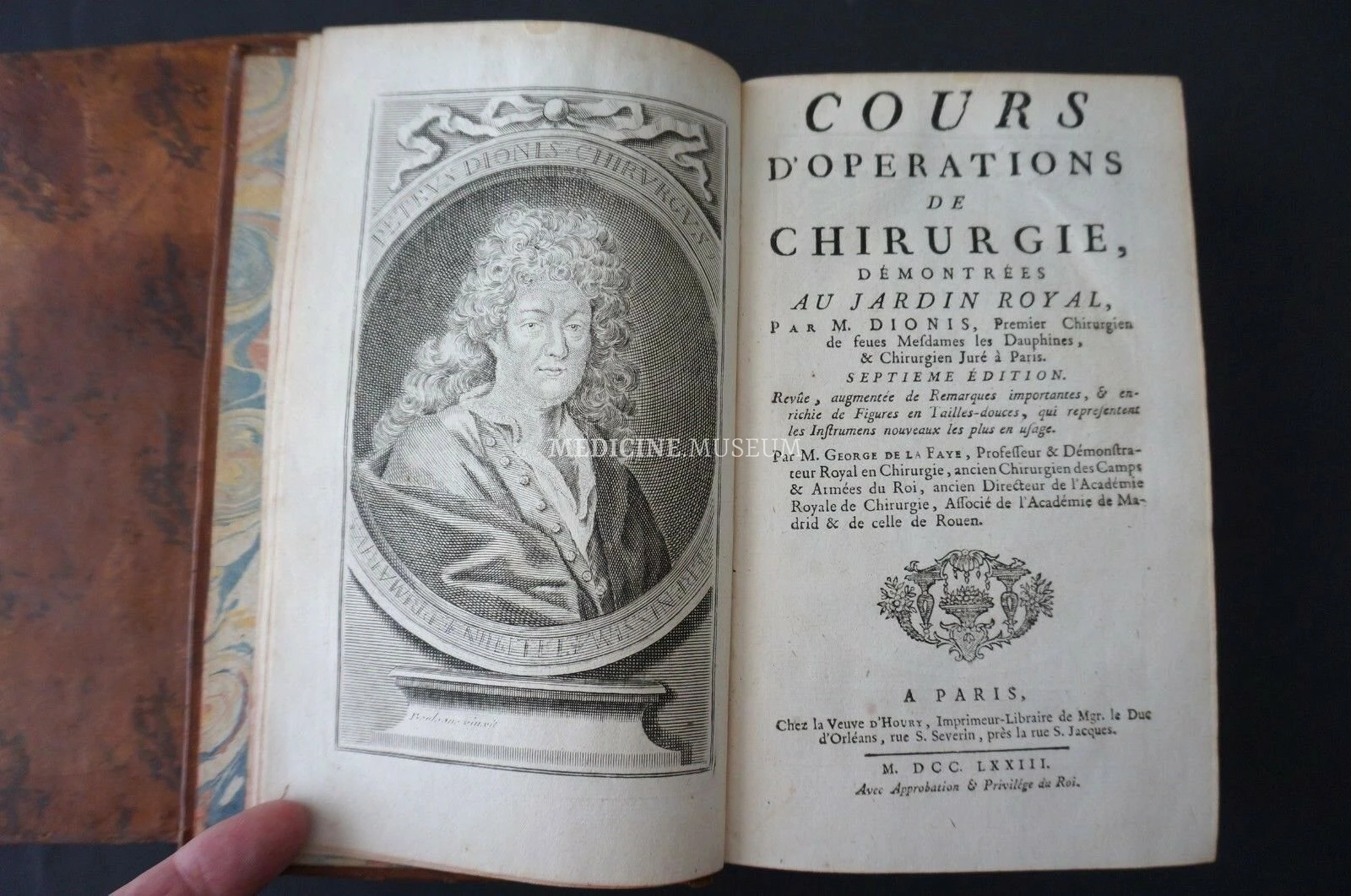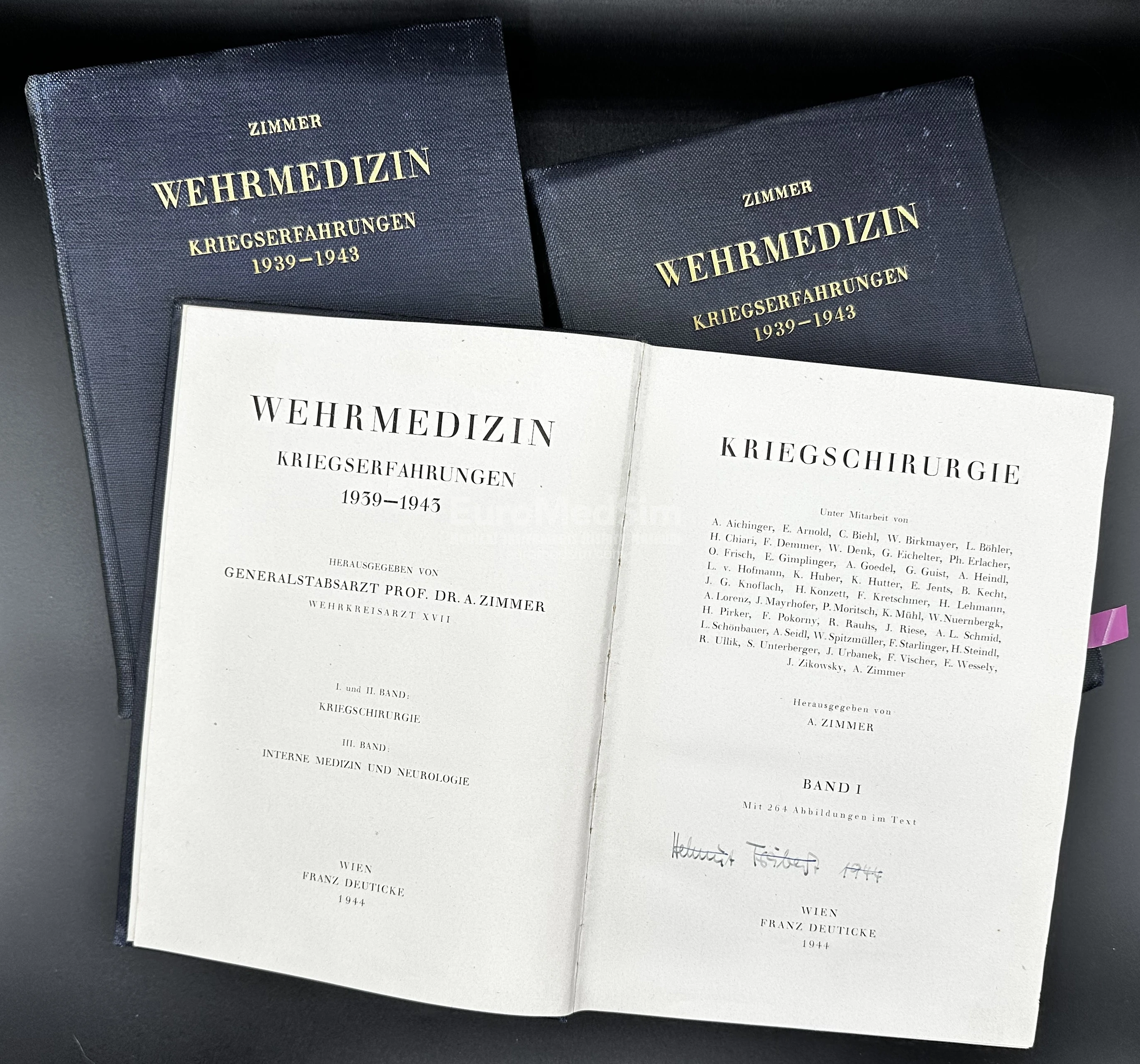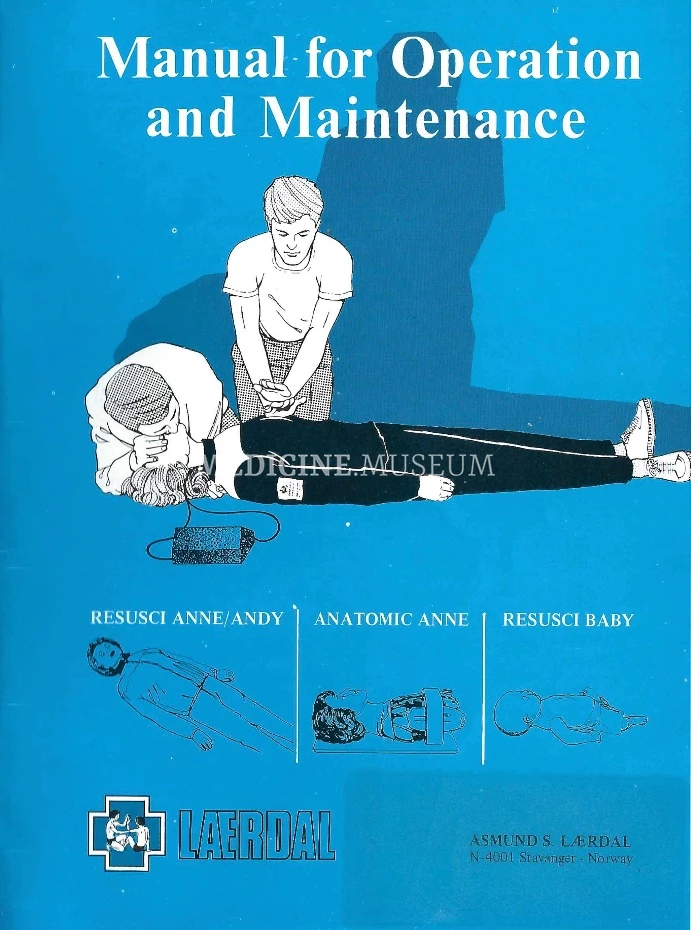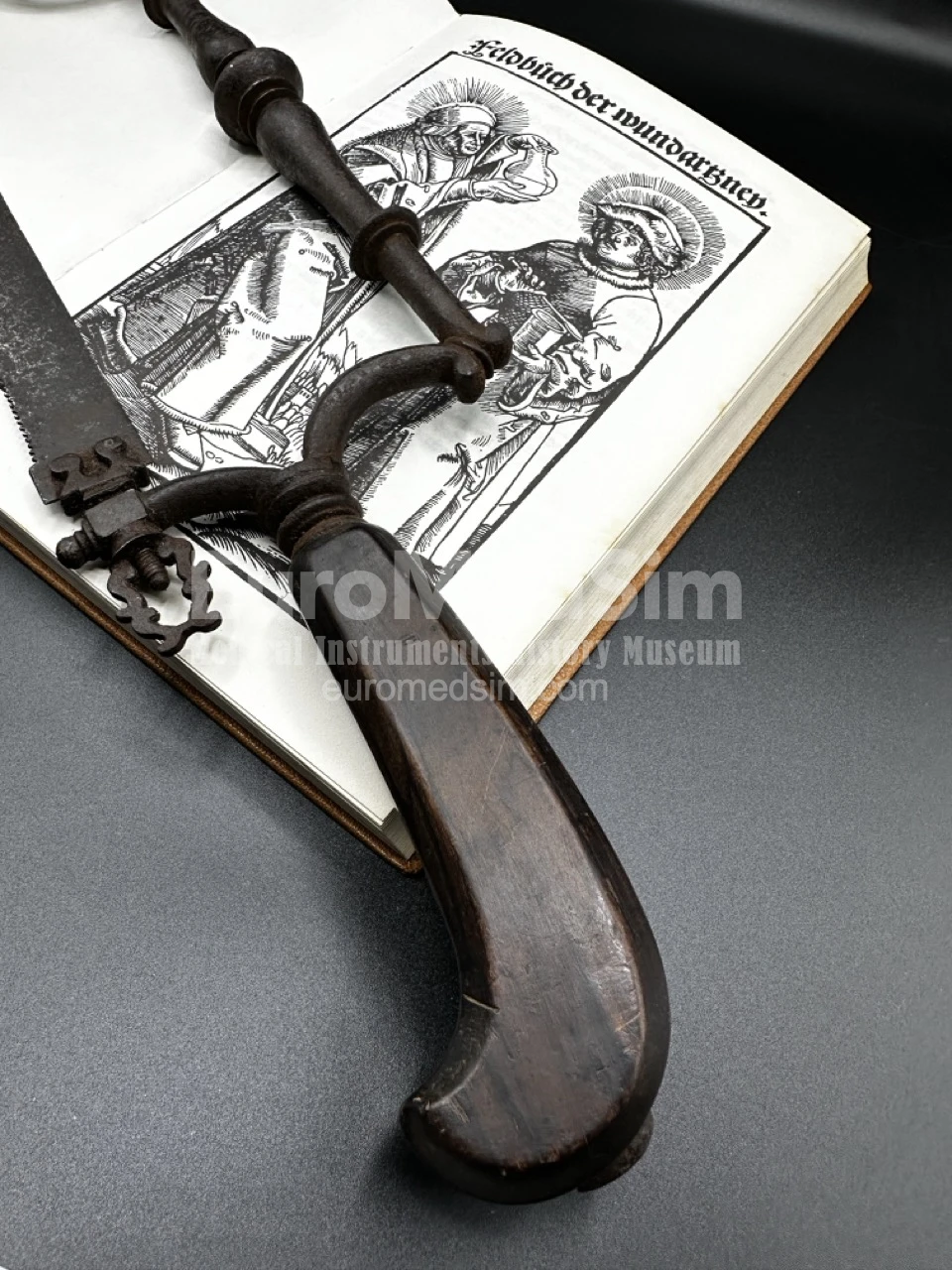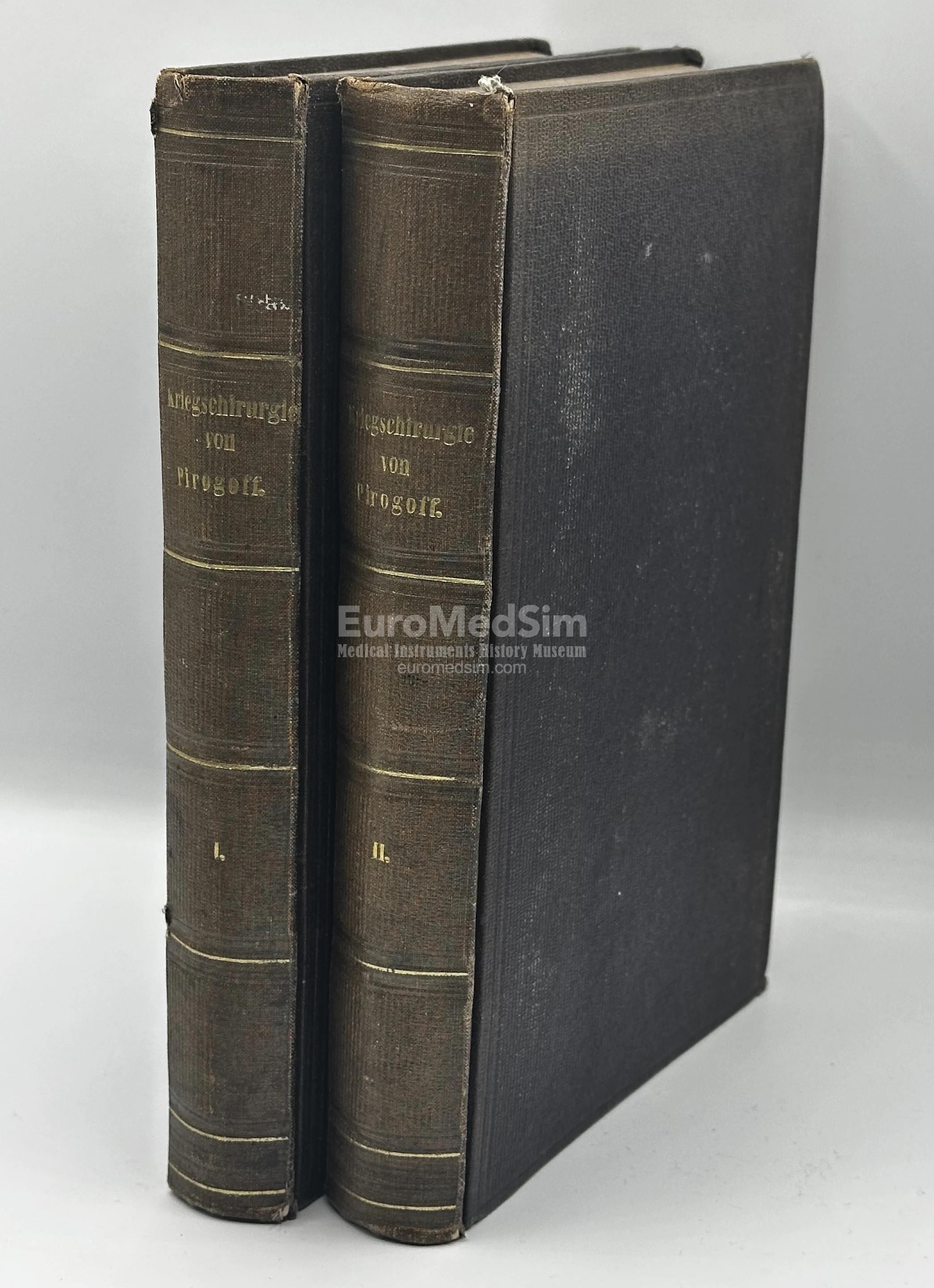Les Œuvres de M. Ambroise Paré, conseiller et premier chirurgien du Roy, 1st edition, 1575
The first edition of the Complete Works by Ambroise Paré published his lifetime, 1575
Paré, Ambroise, 1510?-1590. Les Œuvres de M. Ambroise Paré, conseiller et premier chirurgien du Roy. Avec les figures & portraicts tant de l'anatomie que des instruments de chirurgie, & de plusieurs monstres. Le tout divise en vingt six livres (transl. from French: The works of Mr. Ambroise Paré, advisor and first surgeon to the King. With figures & portraits of both anatomy and surgical instruments, & several monsters. The whole is divided into twenty-six books). Paris, Gabriel Buon, 1575, the first edition.
This unique book is the cornerstone that laid the foundation for modern surgery in France and the rest of Europe (and in those days, therefore, for all of world surgery). It is the most important surgical book of the 16th century - as important as De fabrica humani corporis (1543) by Andreas Vesalius in the field of anatomy or De revolutionibus orbium coelestium (1543) by Nicolaus Copernicus in the natural sciences. This publication is a comprehensive collection of Paré's writings, bringing together his various works into one comprehensive volume. Like the previous books, it is written in French rather than Latin, as it should be for such an authoritative and profound scientific work - not only because of the author's lack of linguistic knowledge, but also as a real challenge to the academic medical community, the discussion with which continues in the pages of the book - just read the Sonnet of the Author that precedes the main sections of the book (see below).
The author's collected works cover a wide range of medical topics, including surgical techniques, instrumentation, wound care, and prosthetic design. Paré has introduced numerous innovations in surgical procedures and the design of surgical instruments, many of which are illustrated with woodcuts in this edition. His practical approach to surgery, a departure from the traditional use of red-hot iron cauterization and boiling oil for haemostasis and wounds' treatment, marked a significant advance in patient care. Pare was particularly adept at creating artificial limbs, a field in which he was a pioneer. This edition includes descriptions and illustrations of these devices, demonstrating Pare's ingenuity and his contributions to prosthetics. The book is notable for its anatomical illustrations and depictions of "monsters," both existing and fictionalized from the animal kingdom, as well as human congenital deformities (like Siamese twins) that contributed to the early study of teratology.
This edition of Paré's works is a milestone in the history of medicine, epitomizing the transition from medieval to modern practice in surgery and medicine. Its publication in 1575 places it in the context of the Renaissance, a period of significant scientific and medical discovery and innovation. Pare's work symbolizes a shift toward empirical observation and experimentation in medicine, rather than simply a scholastic adherence to the ideas of Galen and Hippocrates.
Description
Paré, Ambroise (1510-1590). Les oeuvres. Paris, G. Buon, 1575, 1st ed., (18),945p., woodcut title, portaite, numerous woodcut illustrations, later half-leather, paper. In-folio (text-block 350 x 222 x 50 mm). Lacks entire index (45p.); title lacks upper and lower margin (incl. publication year) and is doubled; final leaf doubled; p.945 doubled (over p.946); several 19th cent. owner's entries on first few Ivs. (incl. one mounted leaf w. 19th cent. handwritten dedication to Paré); yellowed; two bookplates on upper pastedown ('Dr Octave Pasteau' and 'The John Crerar Library of Chicago', the last with cancellation stamp); occasional markings in ink-pen and red and blue pensil. Library stamp in lower left corner of frontcover: joints starting separation and wear at top of spine. Durlina 3530; Bibl. Walleriana 7171; Wellcome I. 4819.
Provenance
- In the Library of Dr. Jules Fr Vacher, Versailles (second half of 19. cent.)
- In the Library of Dr. Octave Pasteau (1870-1957), Chef de Chirurgie de la Faculté de Médicine, Vice-President of the International Society of Urology, 19. Av. de Villars, Paris (first half of 20th Cent.)
- In the John Crerar Library (est. 1894), the University of Chicago, IL, USA (till 10 July of 1984)
- Acquired through the Bubb Kuyper Auctioneer of Books, Manuscripts and Prints, at the Auction 79, Dec. 2023
About Ambroise Paré
The french surgeon "Ambroise Paré, a humble Huguenot beginnings and poorly educated, became the sixteenth century's outstanding surgeon and the greatest military surgeon before his fellow countryman, Larry, more than two hundred years later. He began his studies as a barber-surgeon and at age nineteen, while working as a surgical dresser and assistant in a Paris hospital, he began to acquire the fund of practical knowledge for which he became a legend in his own time. Probably his best known innovations were his discarding the use of boiling oil in gunshot wounds and the reintroduction of simple ligature instead of red hot cautery after amputation. He invented main surgical and dental instruments and was especially adept at devising ingenious artificial limb"(after Heirs of Hippocrates).
Sonnet of the Author
The author's sonnet is one of the few parts of the book written in Latin. Below is a rough translation of its first part.
Now I release into the light,
The heir of my art, containing all the secrets
That long ago the Arabs and Greeks
Left in writing for our latest age.
It is full of various examples,
Not unlike we see of the peacock's thousand eyes
Shining, when in great progress,
Its plume shows off with proud arrogance.
Now go forth, my most precious fruit,
Which for forty years I did not cease to polish:
Go, asking everyone to please follow
Lysippus who gently reprimanded Apelles.
But stay back, Envious ones: for eternally
In spite of you, this work of mine will live.
Just after the page with a portrait of Ambroise Paré the page containing Sonets is following. It is accompanied by ink remarks of the Dr. Jules Vacher, one of the owners (see the Provenance above), as well as additionally pasted to a blank space on the bottom right-hand page is a handwritten 'Sonnet to Ambroise Paré', and dated 'Versailles, May 10, 1892' and signed by Dr. Jules Vacher, apparently under his own authorship.
Other editions and translations
The next, second edition, revised and enlarged by the author, was published by the same publisher, Gabriel Buon, Paris, in 1579.
The fifth edition – the first post mortem publication, was printed by Gabriel Buon, Paris, in 1598.
The first English translation by Thomas Johnson published in 1634, went through a number of editions. "It is unfortunate that this, the only fairly complete English edition of Paré’s works, was derived from the less than perfect Latin editions; though the title claims ‘compared with the French’ it seems that Johnson’s French was not equal to the task. In spite of this, the Jacobean English of the translation suits Paré’s often racy style very well and the book is in many ways delightful, if not always very accurate. It also contains Paré’s Apology and Treatise, his fascinating account of his travels and military adventures first published in the Oeuvres of 1585, translated from the French by George Baker" (cited by IML Donaldson).
References
This extremely rare first edition of Ambroise Paré's complete works (fr. Œuvres) was published by Gabriel Buon in Paris in 1575. Standard citations: Durlina 3530; Bibl. Walleriana 7171; Wellcome I. 4819.
The reference copy of the first edition of Paré's Oeuvres can be considered to be that of the Wellcome Collection Library, however, in this copy, the leaf with page iij and the portrait of Ambroise Paré on the opposite page is missing, several pages in the final part (Table of the most notable terms) are damaged.

